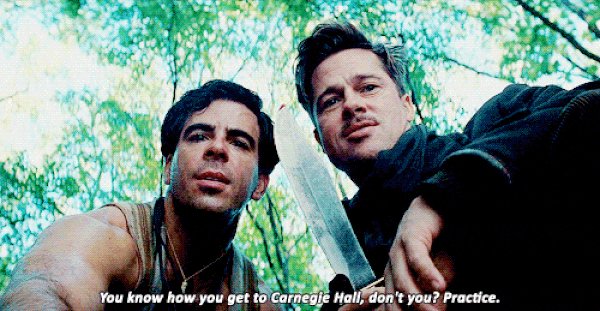How to Get to Carnegie Hall
*Instructor’s Note – this is a DRY FIRE exercise only! Ensure you have your firearm clear and safe before proceeding.
In previous posts I’ve explained that you need to include range time and possibly coaching fees in to your firearms budget. In this post, I’m going to explain why. Some ranges will not allow you to shoot from the draw. Be a good gun owner and obtain permission from the range safety officer before you begin this exercise. Always, ALWAYS, obey the rules of gun safety:
1. Treat every firearm as if it were loaded.
2. Do not point the muzzle at anything you are not willing to destroy.
3. Keep your trigger finger straight and off the trigger until you are ready to fire.
4. Be sure of your target and what is beyond it.
Shooting is just like any other sport. It requires hand/eye coordination, muscle memory, and balance. Developing these skills takes time and repetition. One tool that you can use to develop your shooting form is to dissect an entire movement (in this case drawing your pistol from the holster) into smaller movements for repetitive practice. Just like a baby first learns to crawl and then walk, so too will we learn good fundamentals at the sub-level and then put them together for improvement at the gross motor skill level.

For example, if we begin with our hands empty and out front then we can break the entire movement down in to 3 steps:
- From the hands up to gripping the pistol,
- drawing the pistol, lowering the elbow, and gripping with the support hand, and
- extending (sometimes called “railing out”) both arms until you have site alignment. Through this, also maintain good shooting stance.
It’s possible even to break these in to smaller steps, but this is a good jumping off point for shooters new to this type of training.
Slow is smooth, and smooth is fast.
Perform each step at least 10-15 times before moving on to the next step. Make sure each repetition is done slowly. In fact, make it painfully slow. Once you have completed each step of the draw begin the whole process over again, but pick the pace up. Do not go full speed, maybe 75%. For the third circuit go full speed. On the last circuit, let ‘er rip tater chip and go as fast as you can without dropping your pistol. Then take a break and let the acid drain from your muscle tissue. To recap:
Set/Speed
- 20-40%
- 75%
- 100%
- 110%
Rest
After this break, put all these pieces together and practice the complete pistol draw technique. Perform 10-15 repetitions at half speed and then 10-15 repetitions at full speed. Take a break and then begin your live fire.
Set/Speed
- 50-75%
- 100%
Break/Begin live fire training.
This is a long training evolution, but like Lt. Aldo Raine said,

Add your favorite range drills in the comments below!